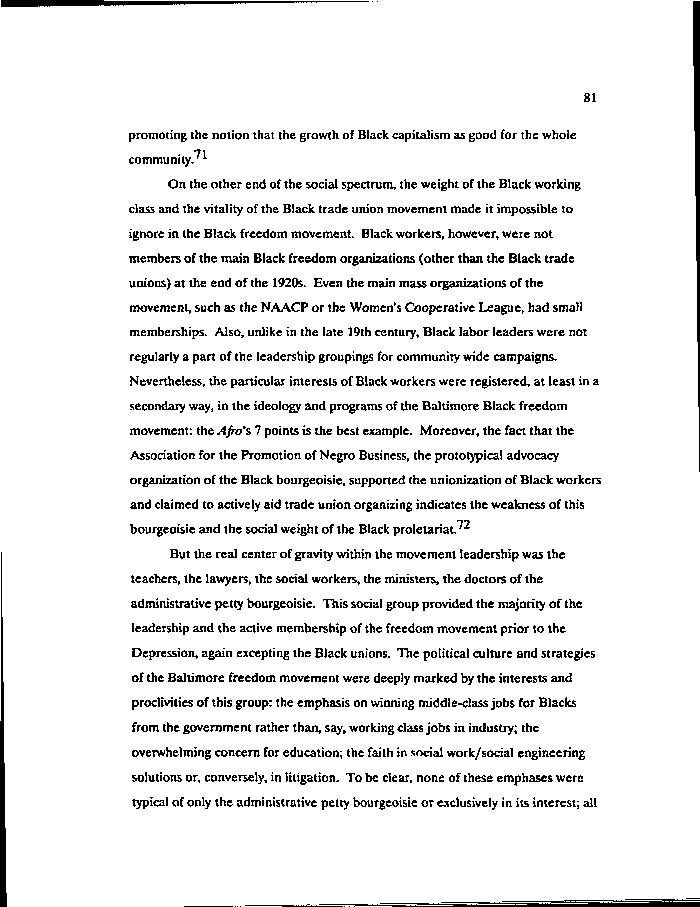|
81
promoting the notion that the growth of Black capitalism as good for the whole
. 71
community.' *•
On the other end of the social spectrum, the weight of the Black working
class and the vitality of the Black trade union movement made it impossible to
ignore in the Black freedom movement. Black workers, however, were not
members of the main Black freedom organizations (other than the Black trade
unions) at the end of the 1920s. Even the main mass organizations of the
movement, such as the NAACP or the Women's Cooperative League, had small
memberships. Also, unlike in the late 19th century, Black labor leaders were not
regularly a part of the leadership groupings for community wide campaigns.
Nevertheless, the particular interests of Black workers were registered, at least in a
secondary way, in the ideology and programs of the Baltimore Black freedom
movement: the Afro's 1 points is the best example. Moreover, the fact that the
Association for the Promotion of Negro Business, the prototypical advocacy
organization of the Black bourgeoisie, supported the unionization of Black workers
and claimed to actively aid trade union organizing indicates the weakness of this
bourgeoisie and the social weight of the Black proletariat.
But the real center of gravity within the movement leadership was the
teachers, the lawyers, the social workers, the ministers, the doctors of the
administrative petty bourgeoisie. This social group provided the majority of the
leadership and the active membership of the freedom movement prior to the
Depression, again excepting the Black unions. The political culture and strategies
of the Baltimore freedom movement were deeply marked by the interests and
proclivities of this group: the emphasis on winning middle-class jobs for Blacks
from the government rather than, say, working class jobs in industry; the
overwhelming concern for education; the faith in social work/social engineering
solutions or, conversely, in litigation. To be clear, none of these emphases were
typical of only the administrative petty bourgeoisie or exclusively in its interest; all
|

